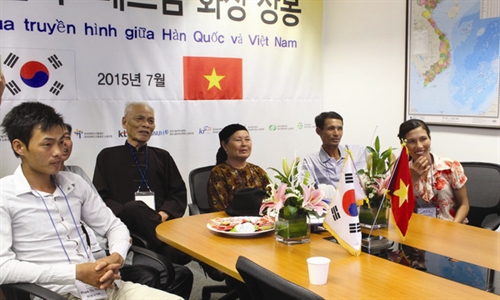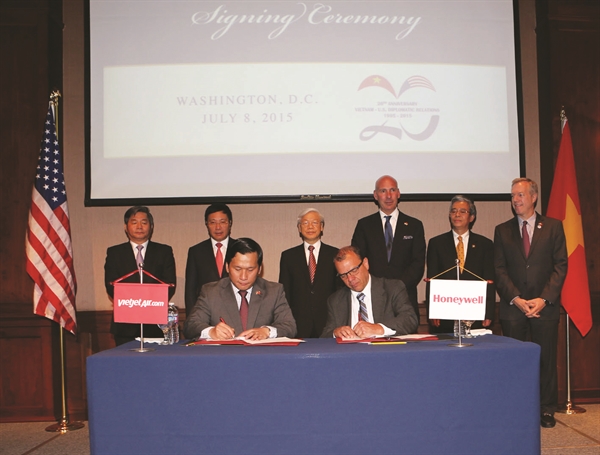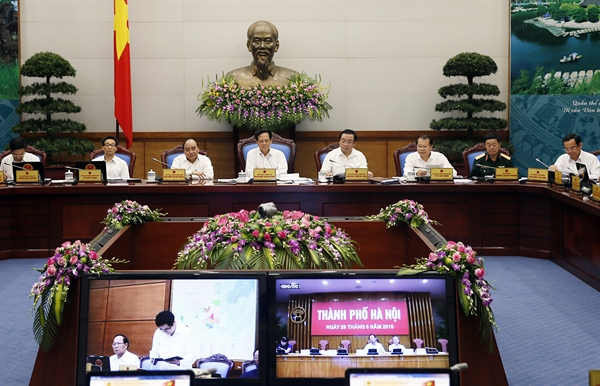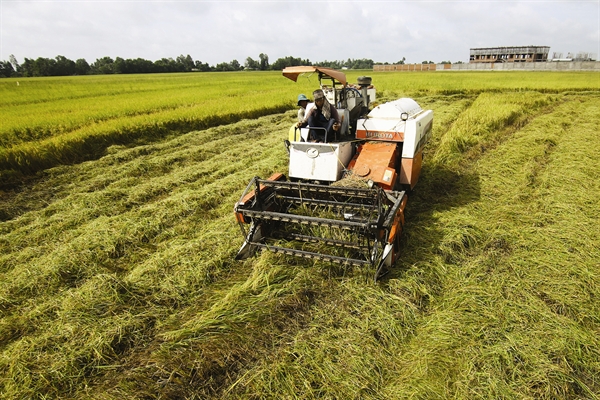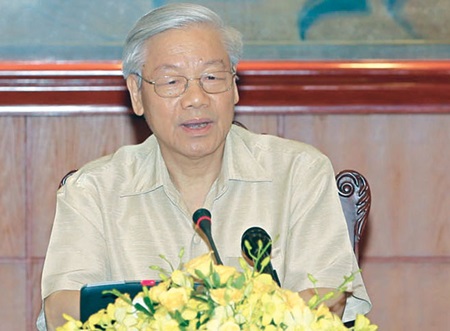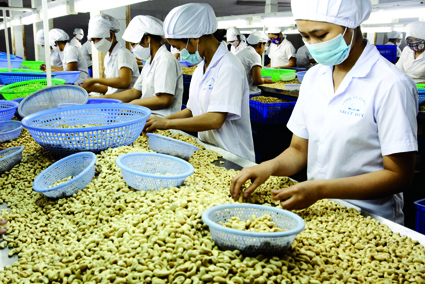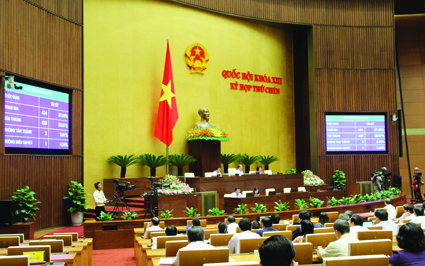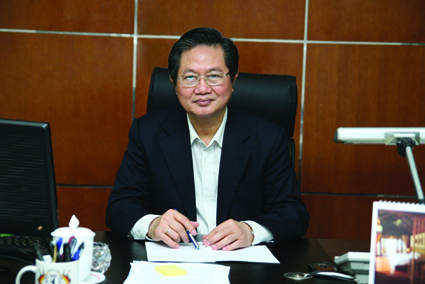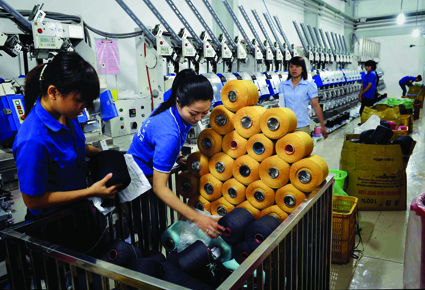Overview of three decades of renewal
The past 30 years of renewal have been an important historical stage in national development. The magnitude of the renewal cause is demonstrated in the transformation from a centrally planned and subsidy-based economy to a socialist-oriented market one; proactive and active international integration and accelerated industrialization and modernization to achieve the goal of a prosperous people and a strong, democratic, equitable and civilized country.
Taking advantage of its geo-economic position in the most dynamic economic region in the world, Vietnam has brought into play its internal resources and mobilized and effectively used external resources to create the national aggregate strength for accelerating the process of industrialization and modernization.
After three decades, Vietnam has built up essential socio-economic infrastructure facilities serving industrialization and modernization. The economic structure has been gradually changed with a greater role of industry as well as trade and services.
Foreign trade has grown sharply with certain export products having carved a niche in the global market. The economy has drawn a large volume of foreign investment and initially joined the global production network and value chain.
Rural economy, especially agricultural production, has step by step switched from small-scale and scattered operations to commercial production, taking in account market demand while promoting the advantages of a tropical agriculture.
A number of key economic regions as well as large urban centers and industrial parks have been established creating a motive force for local development. The number of businesses and businesspeople has grown to act as an important force to implement the country’s policy of industrialization and modernization.
Shifts have also been seen in population and labor structures toward lowering the proportion of rural population and agricultural workers while human resources quality and people’s living standards have been markedly improved.
However, Vietnam is facing many difficulties and challenges, including weaknesses in institutions and governance, low productivity and poor competitiveness hindering sustainable economic development and increasing the risk of lagging behind other countries in the region.
There are also shortcomings in culture-society, education-training, science-technology, healthcare and the environment, and widening gaps between the rich and the poor.
The shortcomings can be attributed mainly to subjective causes, such as unclear model of industrialization and modernization; lack of a modern industrial development strategy at the national level as well as specific and focal strategies for every industry; improper attention to agricultural and rural industrialization and modernization; weak national governance and economic institutions; and limited qualifications and sense of public service of civil servants.
 |
| Pleiku city (Gia Lai province) in the morning __Photo: Gia Lai newspaper |
Opportunities and challenges
The strong and fast changes around the world have brought both opportunities and challenges to Vietnam’s development. After the global financial crisis and economic downturn, global development is facing a new turning point as global rules, standards and institutions are undergoing crucial adjustments.
New-generation free trade agreements with high-level commitments, which focus on opening the door for economic development while touching on environmental protection, social equity and human development, require involved parties to make swift adjustments to adapt to the changes.
Knowledge, technology and innovation have become decisive to the development of each country, so Vietnam should boost the application of advanced technologies; pay attention to encouraging renovation and training high-quality human resources; and actively join the global production network, value chain and knowledge system.
Recent complicated political and security changes in the world are not favorable for economic development. Major countries are fiercely competing against one another to spread their influence while many non-traditional security issues have arisen, threatening sustainable development and posing numerous difficulties to the countries, especially small ones.
Additionally, a serious shortage of development resources, particularly natural resources, contradictions between economic growth and energy demand, population boom in underdeveloped countries and population aging in developed countries, and the need for environmental protection are looming large.
Conflict, fierce competition and risks related to the vying for resources put developing countries under great pressure due to their weak capacity. In the region, sovereignty violations and disputes in the East Sea are growing increasingly complicated, challenging Vietnam’s safeguarding for independence, sovereignty and territorial integrity as well as maintaining a peaceful climate for national construction and development.
Strategic orientations for industrialization and modernization
The current era is an ideal time for Vietnam to focus on changing the way of thinking, improve institutions, boost socialist-oriented market economic development, comprehensively and profoundly reform the national governance system and proactively plunge into international integration for speeding up the process of national industrialization and modernization.
Renovating the way of thinking and approaches to accelerating industrialization and modernization
National industrialization and modernization in the coming time must be closely associated with market economy development and international integration, with science-technology, knowledge and high-quality human resources as the main driver. Every resource must be mobilized, distributed and effectively utilized for development based on the market mechanism with the State’s support through laws, mechanisms, policies, strategies and plans.
Industrialization and modernization is a cause of the entire people and society with the engagement of all people and businesses that enjoy equality before law, regardless of their forms of ownership and economic sectors.
On the basis of that thinking, the process of national industrialization and modernization should adhere to the following strategic orientations in the coming time:
(i) To continue rationally developing a number of labor-intensive industries for stepping up labor restructuring and attracting workers from the agricultural sector, while vigorously developing processing, manufacturing, energy, chemical, material, electronic, agriculture-serving and supporting industries of hi-tech content for export and import substitution and for joining in the global production network and value chain, thereby accelerating the industrialization process;
(ii) To strongly develop services that meet production and consumption demands, especially hi-tech and high added-value ones, such as finance, banking, trade, tourism, transportation, telecommunications, education-training, science-technology, and health;
(iii) To push ahead agricultural and rural industrialization and modernization, change the model of agricultural production, and develop large commodity production with the application of high technologies and scientific production processes, combining production with preservation, processing and distribution. To encourage businesses to participate in this sector.
 |
| Mechanized harvest of rice crops in My Xuyen district, Soc Trang province __Photo: Huy Hung/VNA |
Improving institutions and developing a socialist-oriented market economy
The country’s process of industrialization and modernization is associated with the building of a socialist-oriented market economy. It is an economy that operates in full conformity with the rules of a market economy while ensuring the socialist orientation suitable to each period of national development; it is a globally integrated modern market economy under the State management and Party leadership to achieve the goal of “a prosperous people and a strong, democratic, equal and civilized country.”
Laws, mechanisms and policies should be improved to create a fair competitive environment for the development of all businesses. It is necessary to synchronously build and develop different types of markets, abolish monopoly and the “ask-and-give” mechanism in order to increase the role of the market mechanism in the mobilization and distribution of resources as a momentum for the development of businesses.
The State functions to create a favorable, open and transparent legal and business environment for businesses to operate and compete in a fair manner; correct the flaws of the market. It should provide incentives and support for businesses to renew technologies, train high-quality human resources and promote innovation. Another function of the State is to direct and create breakthrough development in a number of sectors and regions.
State resources should be allocated according to strategies, master plans and plans in conformity with the market mechanism in order to provide essential goods and public services. The harmonious and effective combination of the roles of the State and market is important for accelerating the industrialization and modernization process, limiting risks and sharing the fruits of this process among the entire society.
Creating breakthroughs in science, technology and human resources development and infrastructure building
Knowledge and innovation are decisive to the success of the industrialization and modernization process. Therefore, we should make science-technology and education-training truly the top national policy and the primary motivation for developing modern production forces and a knowledge-based economy and increasing the economy’s productivity, quality, efficiency and competitiveness.
It is necessary to create a national innovation and creativity system to promote the creativity of every individual, enterprise and organization. The State should adopt policies to encourage and support businesses in renewing technologies and applying advanced technologies.
Special mechanisms are also needed to develop key scientific and technological research institutes after an advanced model, form research and development centers in different sectors and fields, and promote cooperation between innovation centers, researchers and users.
Businesses of all economic sectors, especially large ones, should be encouraged to research, develop and apply scientific and technological advances and employ modern governance models for raising their productivity and competitiveness.
A necessary task is to develop high-quality human resources, capitalizing on the “golden population structure” for development by leaps and bounds. Training must be linked with science and technology research and application as well as market and business demands.
Importance should be attached to developing capable business managers, top scientists and technologists, and highly skilled workers, and to finding, training and employing talented people, especially calling overseas Vietnamese and foreign scientists to participate in scientific and technological activities in Vietnam.
Developing a synchronous infrastructure system is urgent requirement in Vietnam. To do this, it is necessary to complete the national infrastructure planning.
Resources should be further concentrated on major and important transport projects to ensure smooth linkage between major economic centers and trade hubs, giving priority to key development routes, the North-South transport axis, East-West economic corridor, and major airports and seaports.
Electricity sources should be quickly developed and the electricity grid should be completed to ensure sufficient electricity for development demands.
Attention should be paid to synchronously developing irrigation facilities, building more reservoirs in areas frequently hit by drought, and building and reinforcing sea and river dike systems, anti-disaster works and sheltering areas for fishing vessels.
The information and communications sector and information technology system should be modernized.
Urban centers should be developed with synchronous and modern infrastructure, particularly water supply and drainage and waste treatment facilities. Urban planning should be improved and properly managed. Industrial park infrastructure should be completed to meet production and environmental protection requirements.
A number of special economic zones should be established as growth poles. To realize this vision, favorable mechanisms and policies are needed to attract non-state investment in the construction and operation of infrastructure facilities in these zones.
Proactive international integration
Industrialization and modernization should take the full advantage of opportunities brought about from the process of international economic integration, striving for upstream participation in the global value chain and production network, improving the position and competitiveness of each domestic enterprise and industry on the world market. At the same time, attention should be paid to preventing and mitigating negative impacts of the process of international integration on the national economy, which must be built into an independent and self-reliant one.
Cautious and adequate preparations should be made before extending negotiations on and signing new-generation bilateral and multilateral free trade agreement to ensure effective implementation of the signed agreements and help Vietnam expand its export markets and attract more external resources for national industrialization and modernization.
Internal resources should be brought into play as a decisive factor for successful competition on the domestic market which is about to be opened to foreign partners. Competition strategies of the national economy, sectors, key products and big businesses are also required for successful integration.
Competition in international integration must be based on innovation and creativity with the three pillars of science-technology, high-quality workforce and modern institutions. The State should introduce specific policies to help businesses enhance their competitiveness by applying scientific and technological advances and reducing costs.
Foreign investment should be attracted in a selective manner, giving priority to multinational groups leading the global value chains in technological fields, in order to create spillover effects of technology, human resources development and advanced management skills.
Reforming the national governance system in a comprehensive and profound manner
Driving up industrialization and modernization should go in parallel with building a national governance system up to standards of a modern industrialized nation through:
(i) Renewing and completing institutions, laws, mechanisms and policies in tune with modern governance standards with a view to enhancing the state management effectiveness and efficiency in the context of market economy development and international integration;
(ii) Streamlining state management apparatuses at all levels; clearly defining the functions, tasks and powers of each agency at different levels and in different sectors and localities; increasing publicity, transparency and accountability to ensure management effectiveness and efficiency at all levels; creating strict and effective supervision mechanisms and stringent penalties to prevent and combat corruption, waste, bureaucracy and group interests; legislating for the people’s participation in counter-argument of policies and inspection and oversight of activities of state agencies; building a state that advocates and supports development, encourages and nurtures creativity and operates a modern and effective administrative apparatus supporting businesses and people; separating public services from the state administrative system;
(iii) Building a streamlined contingent of professional state employees who possess moral qualities, a sense of responsibility and a sense of serving the people; and,
(iv) Accelerating the building of e-governments at the central and local levels as an effective instrument to help increase transparency and equality, prevent corruption, raise the quality of public services, and implement innovative governance solutions.
A modern and effective national governance system that encourages and fosters innovation is a prerequisite for the successful national industrialization and modernization process in the new situation.
In the face of rapid changes in domestic and international situations, with a strong political will, comprehensive and synchronous reforms, and promotion of innovation, Vietnam is determined to take advantage of opportunities and overcome challenges to become a modern industrialized country.-
